The Moors came to the area in 711 AD, and claimed the hillside that was originally founded by the Romans now known as Granada which is believed to mean “great castle”. The Moors chose Granada as the site to build their citadel…The Alhambra.
The name “Alhambra” comes from the Arabic for “red palace”
In 1492, the site was the Royal Court of King Ferdinand and Queen Isabella. It eventually fell into disrepair and the buildings were occupied by squatters who took the furniture, rugs, etc. and burned it all to keep themselves warm. After the defeat of Napoleon, whose troops destroyed even more of the palace, it was rediscovered by the British and then by an American, Washington Irving, who fell in love with the place. He wrote a book, “Tales of The Alhambra”, which was a best seller and brought the palace to national recognition. Now, it is a UNESCO World Heritage site. As a royal city and citadel, it contained at least six major palaces but the most famous and best-preserved are the ones we toured today…The Comates Palace, The Palace of the Lions, and the Partal Palace.
The beauty, the workmanship, and the intricate detail that surrounded each palace was stunning and we were amazed at how well-preserved many of the palaces were. Some of the ceilings in the rooms were breathtaking.
In order to tour The Alhambra, you must bring your passport to get your entry ticket. Your passport number is actually shown on your ticket to enter. You keep your ticket till the end of the tour as you must present it again to exit.
We first toured the part of the palace that had been started by Charles V – an ediface built as a square surrounding a circle, built in the middle of the Alhambra. It was abandoned in 1637 and was finally completed in 1923. Today it houses the museum of The Alhambra.
The Comares Palace was begun in the early 13th century and has subsequently been modified and refurbished. The Comares Palace is accessed through the Mexuar. Tiles and stucco adorn the ceilings and walls of the palace and we were awed with the intricacies of the patterns. The ceiling in the Hall of the Ambassadors is made of 8017 interlinked pieces of wood that form an abstract geometric representation of the seven heavens.
We walked through the Courtyard of the Lions, the most famous of Islamic architecture. There are two pavilions surrounded by The Fountain of the Lions. The fountain is made up of a large basin surrounded by 12 lion sculptures, which were carved from marble.
We also walked through many rooms, but to be truthful, after awhile we didn’t know exactly what part of the palace we were in. We just entered each room and were swept away by the beauty of the ceilings, with their hanging stucco designs which you can’t even believe are suspended overhead, as well as the beauty of the tile work on the walls and floors.
We entered The Court of the Myrtles, which you enter through two identical doors, dating from the time of Muhammad V. It was stunningly beautiful, again with heavily decorated walls covered in stucco and tiles. After passing through the doors, you enter into the actual court. There is a long reflective pool with myrtle hedges growing along each side. The water reflects the beautiful architecture at the end of the pool.
Finally, we went through the Partal Palace, a pavilion structure on the edge of the Alhambra walls. It was built by Muhammad III, which makes it the oldest surviving palace in the Alhambra today, although it has undergone many alterations since then.
We finished our tour of the palaces, and once outside the walls, we walked to the Generalife a Nasrid-era country estate which was first built by Muhammad II and Muhammad III in the late 13th and early 14th centuries. It was replete with many gardens, and we were lucky to see that some were still in gorgeous bloom. It was a perfect end to a perfect morning.
Fortunately, the rain held off until we were out of the gardens and we just caught a few sprinkles on our way to the bus.
On the way back to our hotel, our guide pointed out the caves tucked into the hillside, where the gypsies live. Many of them are beggars – some work, and some receive stipends from the government. Some of the caves have water and toilets. The caves actually stay pretty much the same temperature inside, be it winter or summer. Many of the caves are passed down through the generations.
We ate lunch and then decided to forego the walking discovery tour in the afternoon with our guide, as the dampness did a number on my bronchitis, and I just didn’t want to be out and about in it any longer.
We went for tapas for dinner and were entertained by a TUNA group that our guide has been friends with for years. TUNA is a musical group, originally from Spain, who dress in traditional student garb and perform. Years ago, they roamed the streets playing music in exchange for coins or food.
The group that seranaded us tonight is renown and they have made and sold records and CD’s. They were very good and they played all the Spanish favorites for us.
It was a lovely day and tomorrow we get to sleep in a little later before we embark on our next adventure.
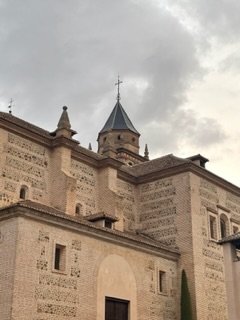
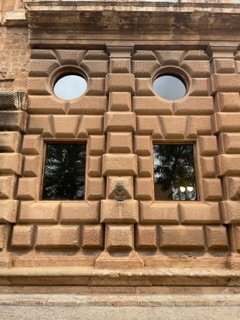

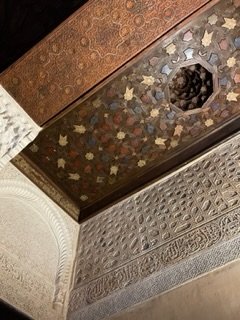
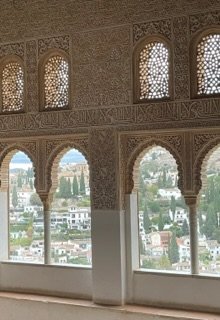
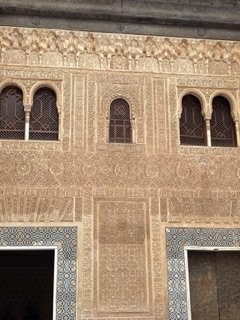
Entrance to the Court of Myrtles

Court of Myrtles
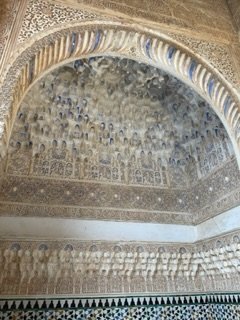
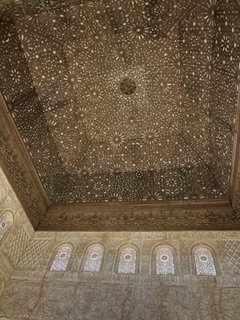
The ceiling in the Hall of the Ambassadors
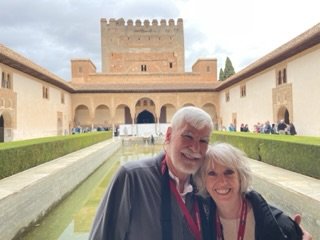
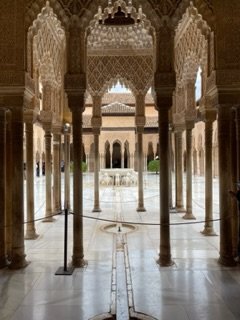
The fountain of lions
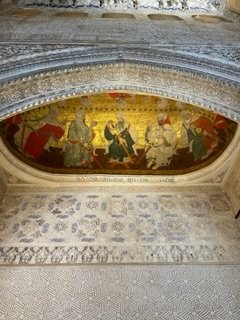

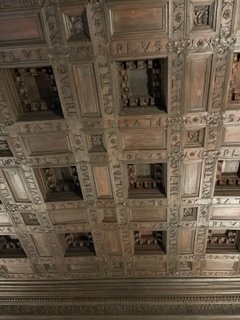
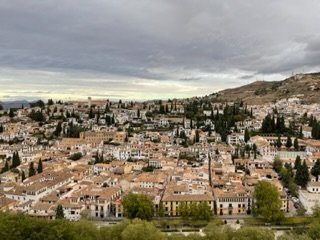
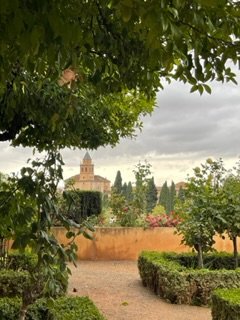

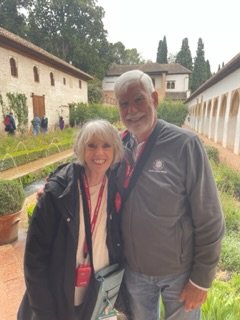
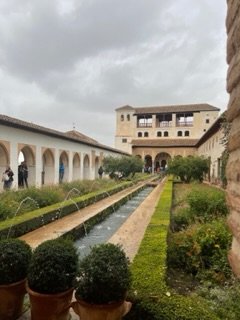
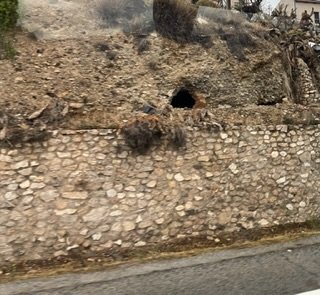
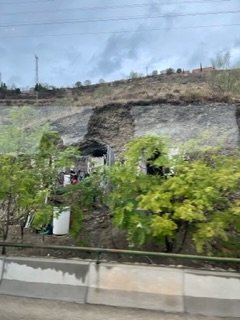
The caves in the hillside
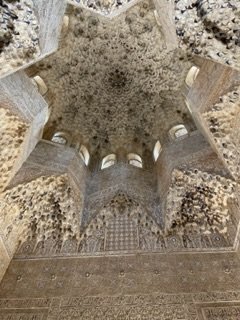
The intricate stucco suspended from the ceiling.
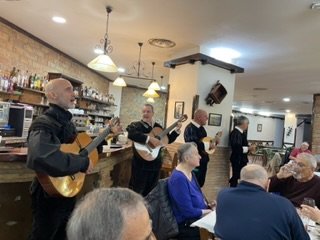
TUNA
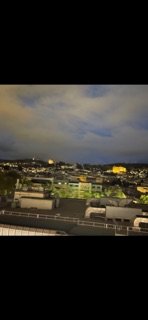
Looking at the Alhambra from the rooftop bar at our hotel
